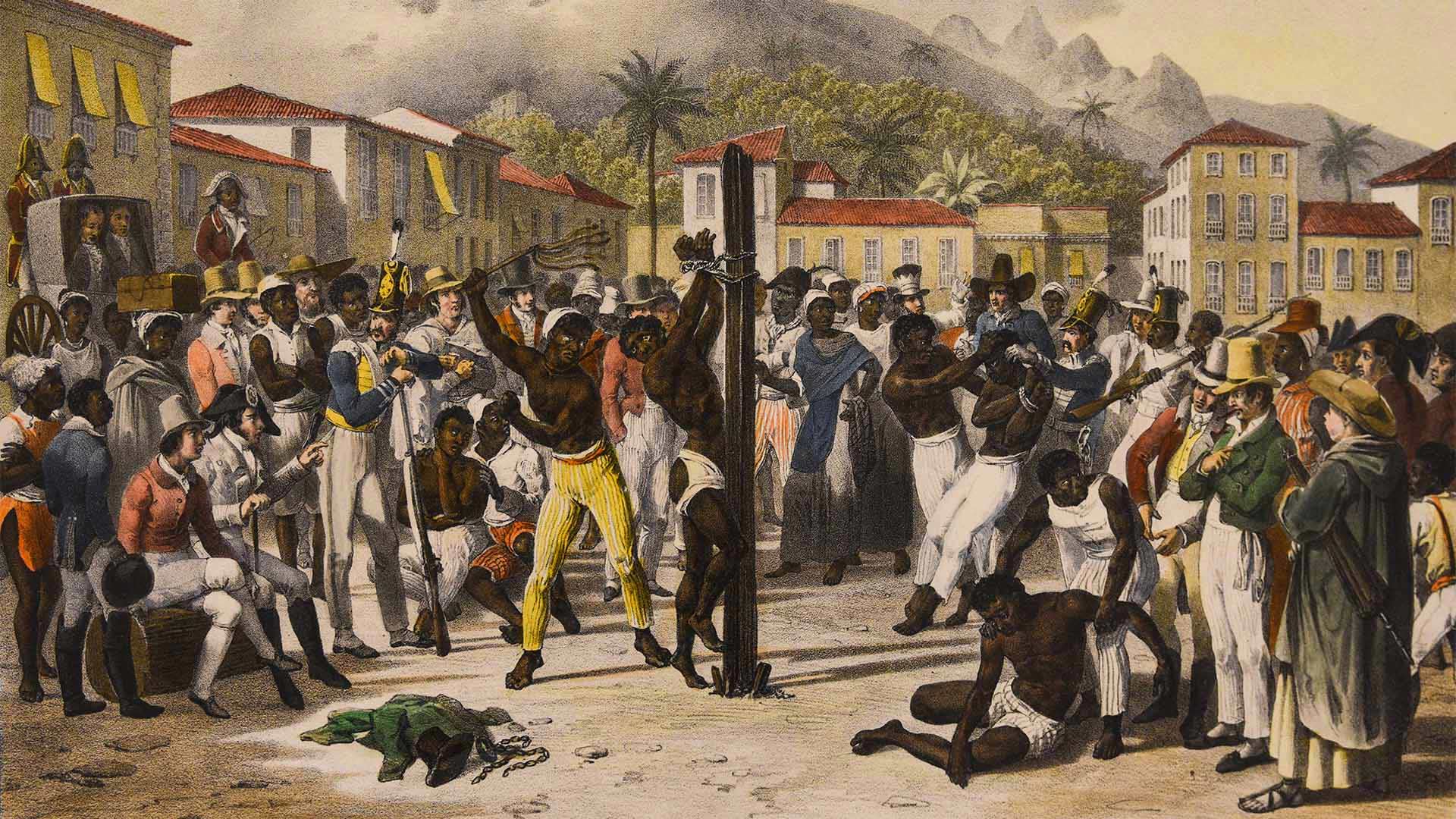In celebration of Black Consciousness Month, we released Rui’s unprecedented posthumous work.
Read below the essay “Was the Portuguese Colonial Racially Tolerant?” In celebration of the Month of Black Consciousness Red publishes Rui’s unpublished posthumous work. One chapter of the book will be published daily from 20 to 30 November. Verify.
Cap 3 – Was the Portuguese colonialist racially tolerant?
In January 1726, the king of Portugal forbade the authorities of Captain Minas Gerais from admitting mestizos to the elective offices of ordinary judges or advisers. His text sheds light on one of the most persistent myths of Portuguese colonization, according to which the Portuguese would be more tolerant than other European colonialists towards the non-white population under their dominion.
The resolution said that “the lack of capable people made it necessary to tolerate the admission of mulattoes to the performance of these positions,” but, having eliminated this reason (the absence of “capable people”, that is, “white people”), it is “indecent for them to be busy people with such a defect, “and condemns the fact that” not a single mulatto within the four degrees in which mulatto is an obstacle enters into the administration of the villages of this captaincy. “
The resolution reiterated another, adopted last year, in which the Lisbon Overseas Council responded to complaints from colonists in Brazil that admitting mulattoes to municipal offices was “indecent.” And he warned the villagers to have offspring who were not “infectious, inferior and unclean,” a recommendation that was very difficult to follow given the small number of white women living in the colony.
The purpose of official attempts of this kind was to strengthen the mechanisms of domination in a society where class divisions, in general terms, corresponded to racial division. During the colonial period, “blood purity” was an official requirement for anyone intending to hold public office, participate in secular religious fraternities (which were extremely important in symbolic ritual of power) or in militias or auxiliary military regiments. Each racial group – whites, blacks, mulattoes, Indians – must have their own fraternities or regiments that do not mix ethnically. In 1765, for example, the statute of the Third Order of San Francisco de Vila Rica prohibited the admission of “mulattoes, Jews, Moors and heretics or their descendants to the fourth generation.”
This type of demand has deep roots in the history of Portugal, whose public law has always been restrictive from this point of view. The prohibition of inter-ethnic marriages was in effect until April 1755, when the Marquis de Pombal decided – for strategic reasons due to the lack of men to defend the colonial territory – to encourage marriage between whites and Indians, declaring that they “have no right.” a shame “.
Anyone who thinks this means an end to prejudice or blood purity claims, even without an official character, after Pombal’s decision is mistaken. More than fifty years later, in the early 19th century, racial prejudice retained its strength, which it never lost. This is evidenced by José Arusha de Toledo Rendón’s comment on the statistics of São Paulo: “Looking at the statistical maps of the province of São Paulo, you can find a large number of whites. But this is not so: most of them are mestizos, descended from a large number of pagans who inhabited this province and did not have the misfortune to stay in the villages. ” And that “when drawing up the lists they are asked by the corporal and the ordinance officers, they declare that they are white.”
The assertion that the Portuguese displayed racial tolerance is one of the features of Brazilian conservative thought, and it was defended by Gilberto Freire, for whom the Portuguese maintained secular contacts with the Arabs who dominated the south of his country. this attitude is more favorable to the non-white population, in addition to the propensity for cohabitation and respect for the mestizos.
“The peculiar predisposition of the Portuguese to hybrid and slave colonization of the tropics largely explains their ethnic or, rather, the cultural past of an undefined people between Europe and Africa,” while African influence “boils under the Europeans and causes a sharp burn.” to sex life, food, religion, ”and“ Europe rules, but does not rule: rather, it rules Africa, ”he wrote in Casa Grande e Senzala.
Thus, Freire thought, the Portuguese would be “much more miscible than other Europeans,” and Brazil “was formed, its colonialists did not care about the unity or purity of the race.”
Even a cursory study of the history of colonization shows that this opinion is incorrect. British historian Charles Boxer, one of the most prominent foreign scholars on the history of Brazil and Portuguese colonization in the world, explored this issue for the entire Portuguese territory in The Portuguese Maritime Empire – 1415-1825 (first published in 1969), where the chapters Purity Blood and Infected Races, he showed how the demand for white and Catholic supremacy pervaded all official documentation and private correspondence of the Portuguese throughout the centuries, until the last quarter of the 18th century. He details the restrictions on non-whites in government or ecclesiastical positions in Africa, India, Brazil and Portugal. “The severity of racial discrimination in the Portuguese Empire, especially against blacks,” he wrote, “was demonstrated by Pombal’s“ inability to bring about the formation of local clergy in East Africa ”to such an extent that almost two hundred years later, in 1954, Father Alcantara Guerreiro noted that the first local priest in Mozambique had not yet been ordained.
In Brazil, as we have seen, these requirements were officially in force until the time of Pombal, and in popular prejudice – much later, when the requirements for admission to the military, municipal administration and craft corporations remained.
But due to a shortage of people who did not have “such shortcomings”, as stated in the royal ordinance of 1726, layoffs were frequent, and they were preceded by lengthy processes. “Originally, racial disqualification was limited to individuals of Jewish, Moorish and heretic descent who dealt with both religious and racial prejudice; but since the early 17th century, specific discrimination against blacks and mulattoes has been legalized because of the close connection between human slavery and black blood, ”says Boxer. And even the presence of regiments of blacks and Indians, such as the regiments of Enrique Diaz and Felipe Camarao, does not support the thesis of the absence of prejudice. They were freed and attained the degree of knighthood in the Order of Christ for their services in the fight against the Dutch occupation in the 17th century, but the military corps they founded strictly respected the racial divisions that then existed.
Catia de Queiros Mattosu was another scholar who discovered limitations that contradict the Portuguese colonialist’s tolerance thesis. In Being a Slave in Brazil, she reported that even free ex-slaves, mulattos or blacks, Africans or Creoles (blacks born in Brazil) were not full citizens, but “there were always the forros, whose rights they were “Very limited in legal terms”, with a number of restrictions that deprived them of “the full exercise of their political rights.” A person could, for example, serve in the army, navy or national guard, but only as a soldier, without direct access to any command post – even after gaining independence.
The observation of this legal racism, now called institutional, contradicts the countless reports of resistance to the law, documented by several captains, especially in Minas Gerais, where opposition to discrimination against mestizo was widespread in the 17th century. But this resistance should not be confused with the friendliness of the colonialist, who always envied his privileges as a white man, which, according to popular belief, was attributed to every person of European descent, nobility and privileged position in relation to non-whites from Colony – mostly mestizo, whom the colonial authorities consider ” internal enemies, ”as defined by the governor of Minas Gerais in 1736, including fugitive slaves, freed blacks, Mamluks and slaves.
If there was resistance to racism, it came from the Brazilian people, who were then forming and who – in the course of confrontation with the authorities and the definitions of the metropolis – realized the divergence of interests, which even manifested itself in the understanding that the need for “purity” of “blood” when filling municipal positions in the Colony were a way to distance Brazilians from the few lines of power to which they had access.
In Vila Rica itself, for example, councilors have resisted the decisions of the Metropolis, arguing “the collective belief that the application of the law depends on proven ability and not on the chance of birth,” says historian ADR. Russell Wood.
Historical research shows that this is more than proof of the alleged tolerance of the Portuguese colonialist, it is the assertion of people who arose, mestizo and faced the racist prejudices of the dominants of the time, and which led to racial attitudes and prejudices that accompanied them to go their own way. way in our country.
Brazilian Portuguese Text
Exclusively for the editorial board PV / Tornado
















